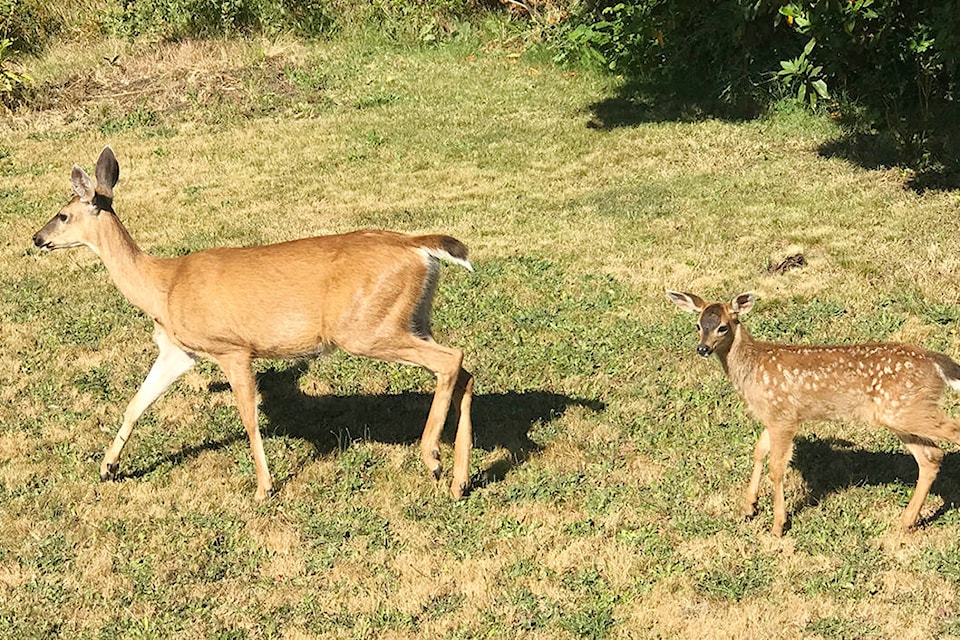We know “tweens” like a little more independence as they eye those teenage years, and older fawns? They’re not much different.
While young fawns tend to stay close to mom, as they get a little older, you’ll see them exhibit a little more independence.
“We really encourage drivers and cyclists to be mindful all the time, but now especially to be a little more cautious – when you see a doe walk out, a fawn or two will often follow behind, it just may take a little longer to see them now,” explains Kristy Kilpatrick, from the Urban Wildlife Stewardship Society.
UWSS is working with the Township of Esquimalt on deer management, in addition to undertaking a research and deer contraception program in Oak Bay.
“There really can be quite a distance between the doe and fawn, so cars that have slowed down for the doe think the coast is clear; as they begin to accelerate, the fawn jumps out to follow its mother.”
Be especially vigilant around dawn and dusk, when deer tend to be more active and when it’s more difficult to see them. Headlights can also confuse deer, causing them to freeze or act unpredictably. To reduce your chance of colliding with a deer, slow down and scan ahead, particularly in areas deer are known to frequent.
Residents can help spread awareness that deer are in the neighbourhood by picking up a free lawn sign from the Township of Esquimalt, Kilpatrick says.
And because deer see dogs as a threat, always try to keep Rover leashed and walking near you to help prevent unwanted interactions. Dogs can also startle deer, prompting them to dart out into traffic.
While most fawns are born in late spring and early summer, some later births are still possible. Because does shelter fawns from predators, leaving for long periods to forage, wildlife centres like the BC SPCA’s WildARC typically advise residents to leave “orphaned fawns” alone – the mother is likely nearby and will return once you leave.
If the fawn appears cold, weak, thin, injured, is bleating repetitively, or if the mother has not returned to a seemingly healthy fawn for more than eight hours, call WildArc. DO NOT remove the fawn on your own – if you’ve inadvertently handled the animal, rub an old towel on the grass, then gently wipe the fawn down to remove human scent.
As UWSS continues to monitor Oak Bay’s immuno-contraception program and track how many fawns are born this year to both the control group and the IC-vaccinated does, it underscores the importance of research in any deer management plan, Kilpatrick says. “While the Oak Bay project will help inform future decisions about immuno-contraception and deer management, research unique to each community is essential for an effective plan.”
For more tips about living with urban deer, visit uwss.ca.
